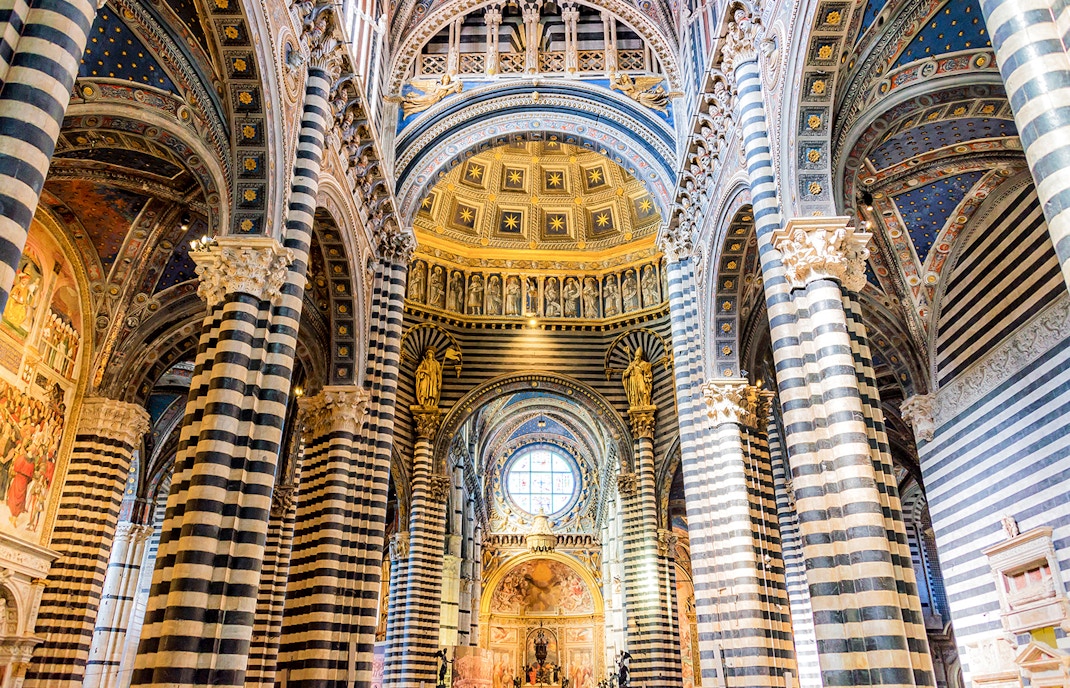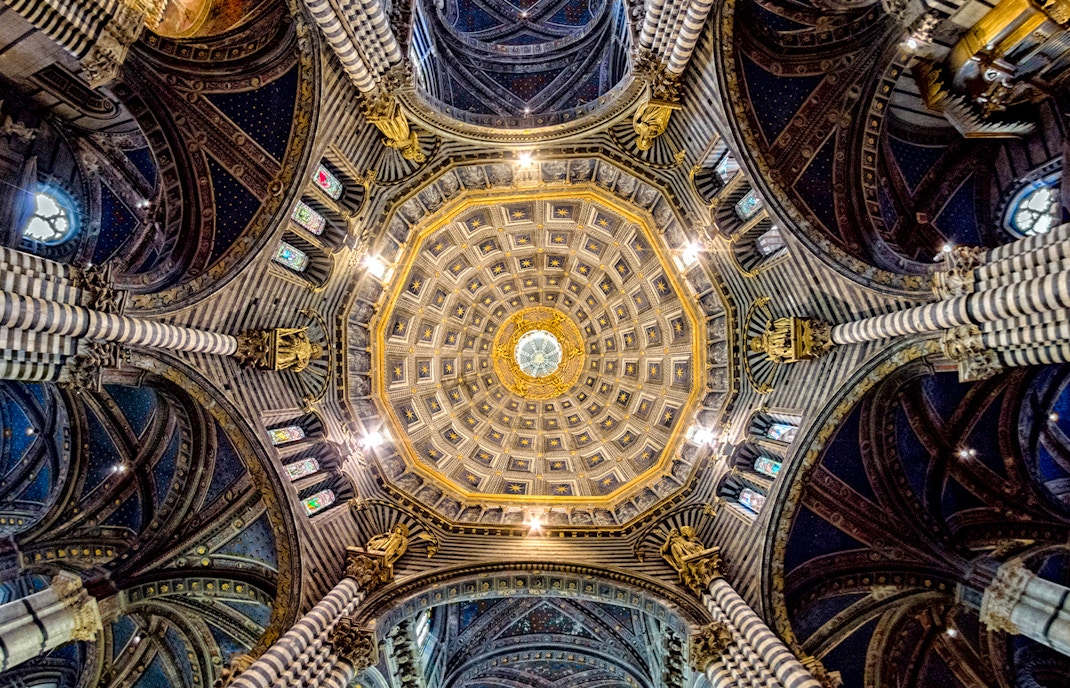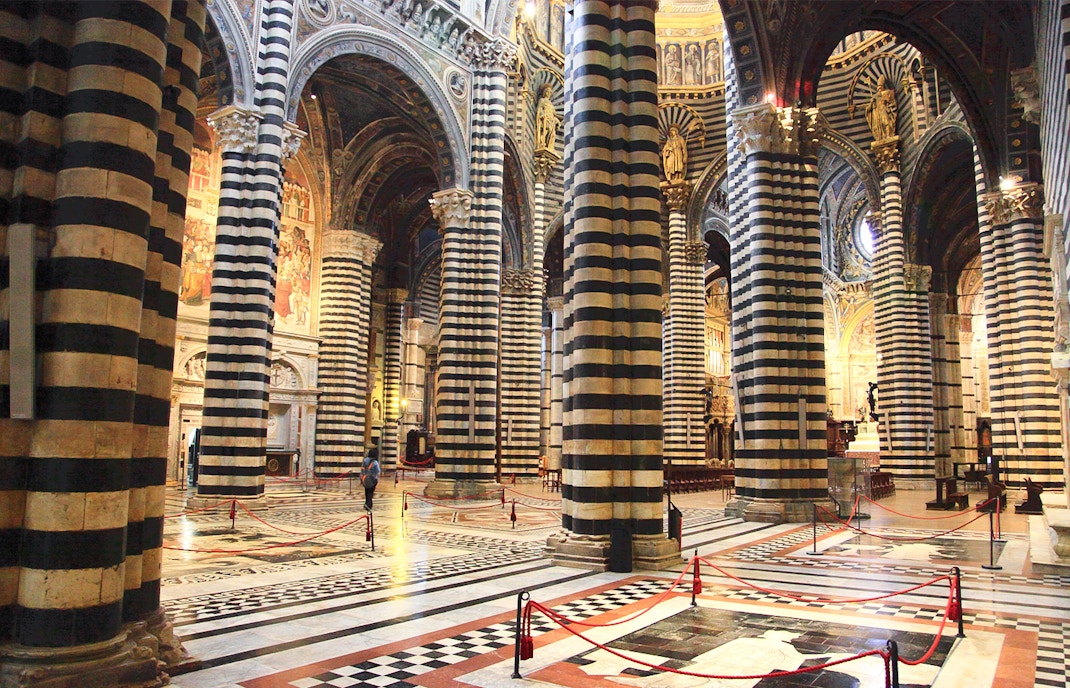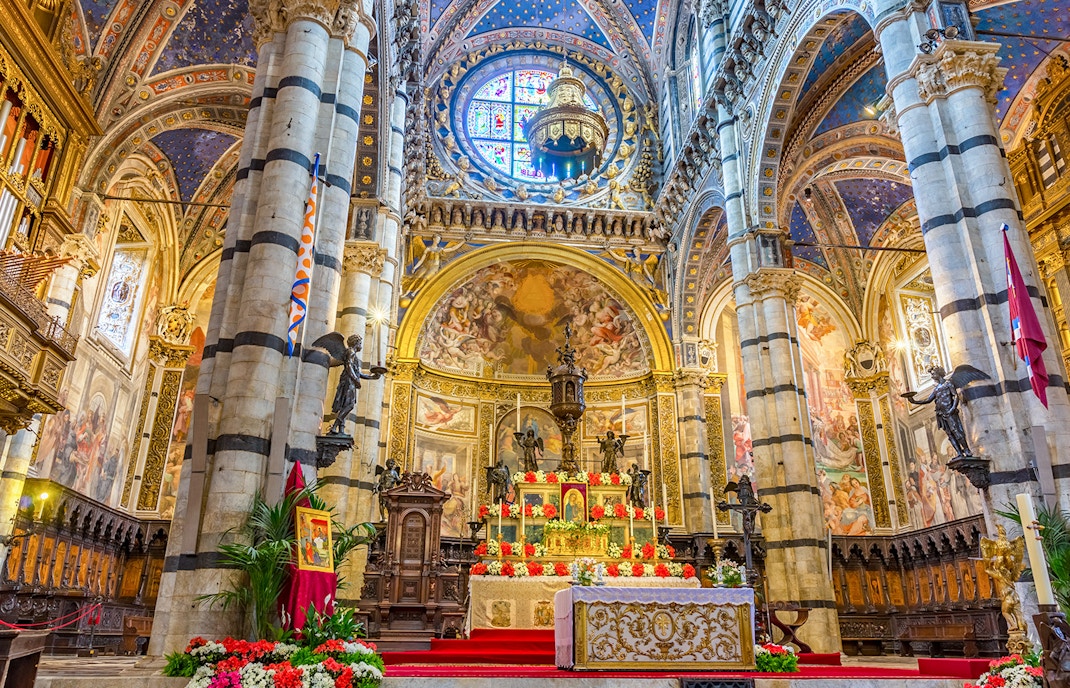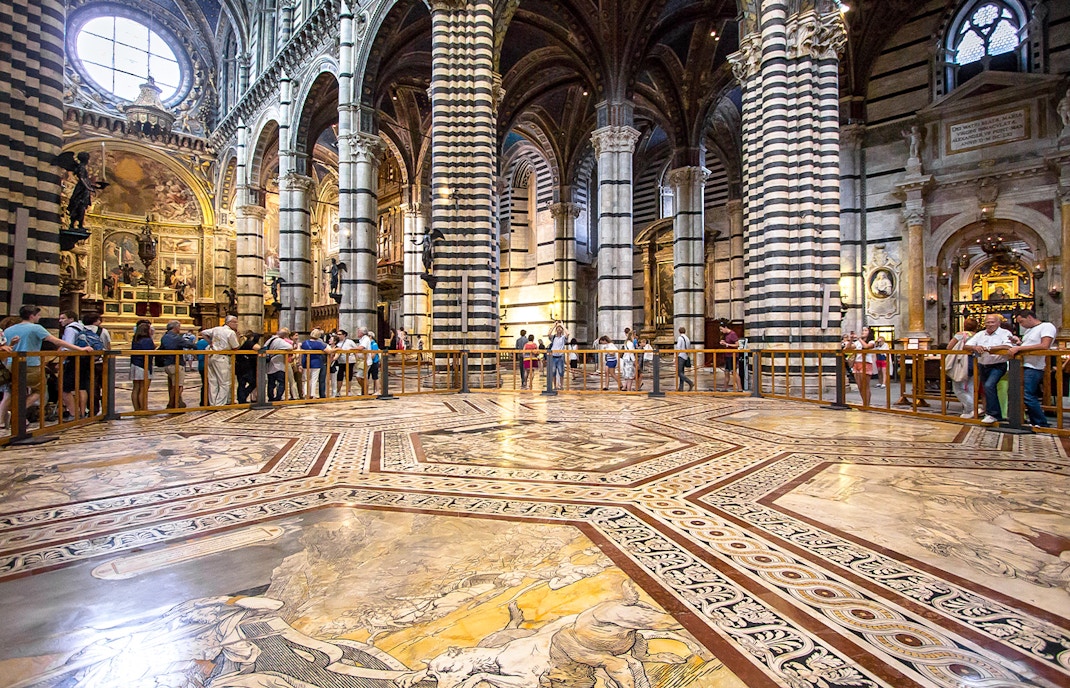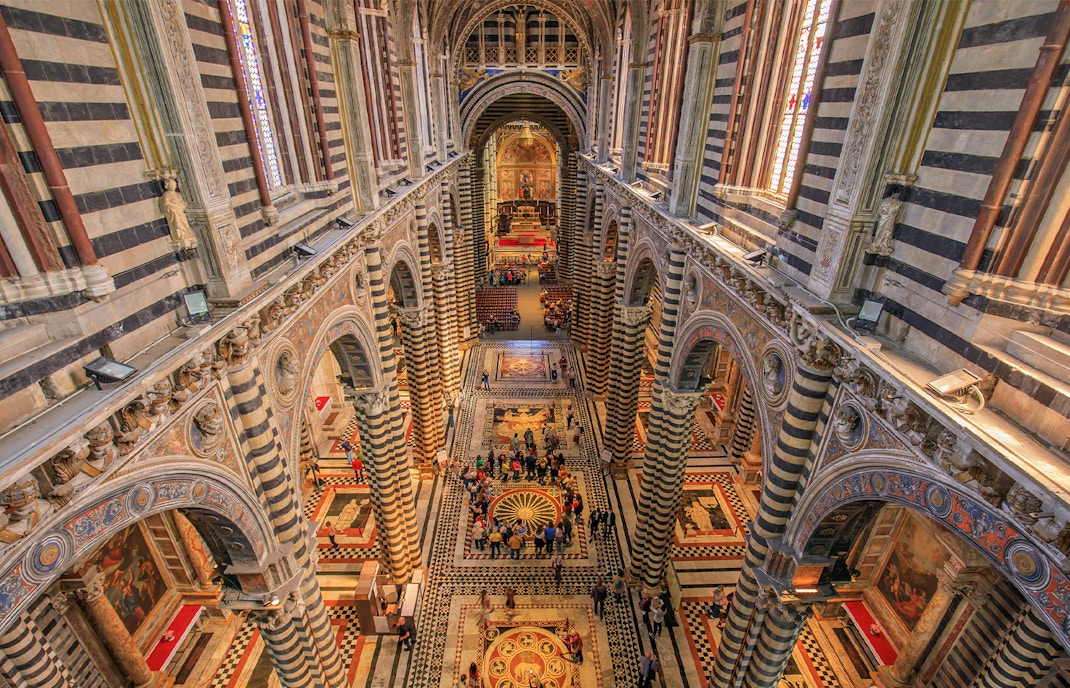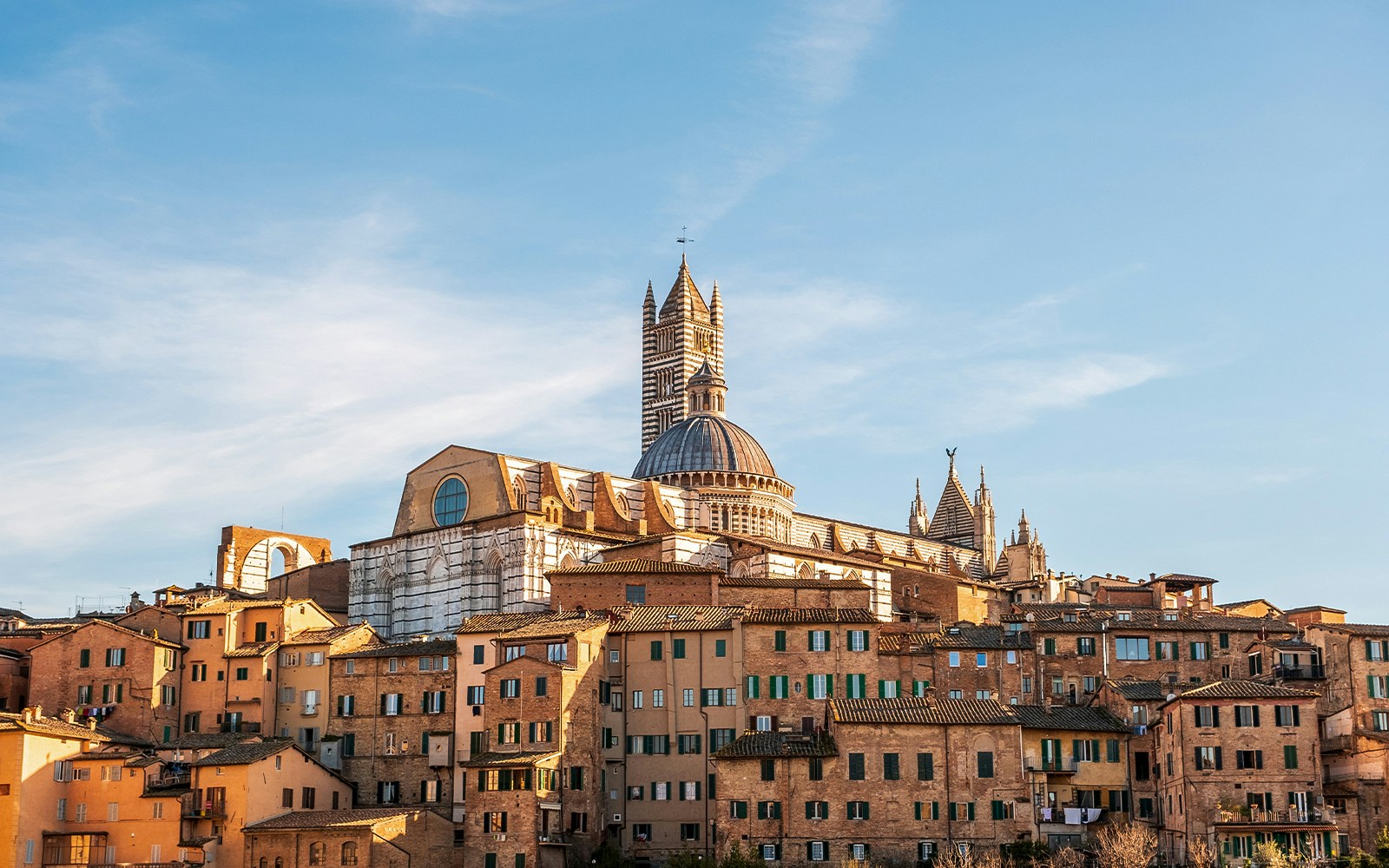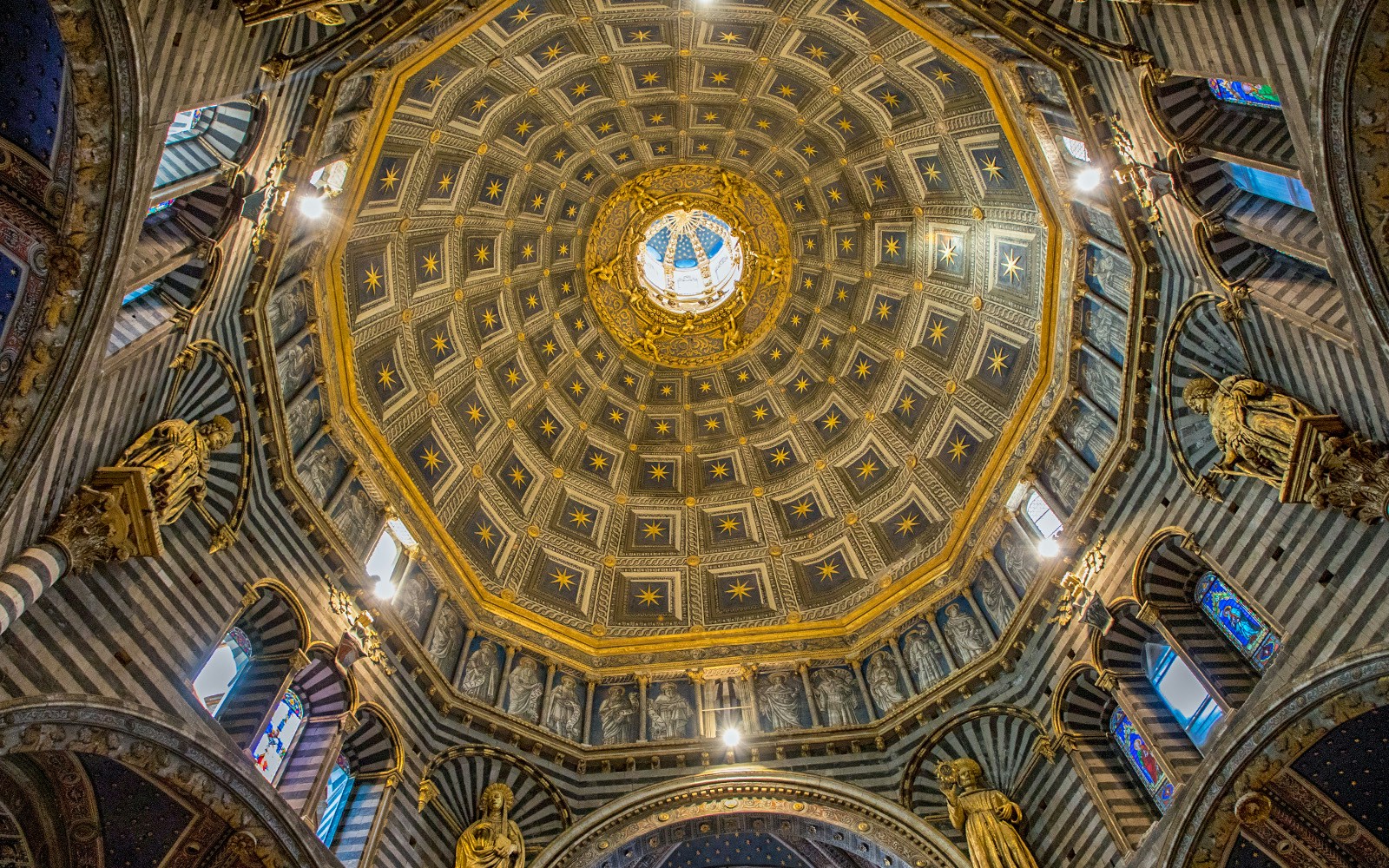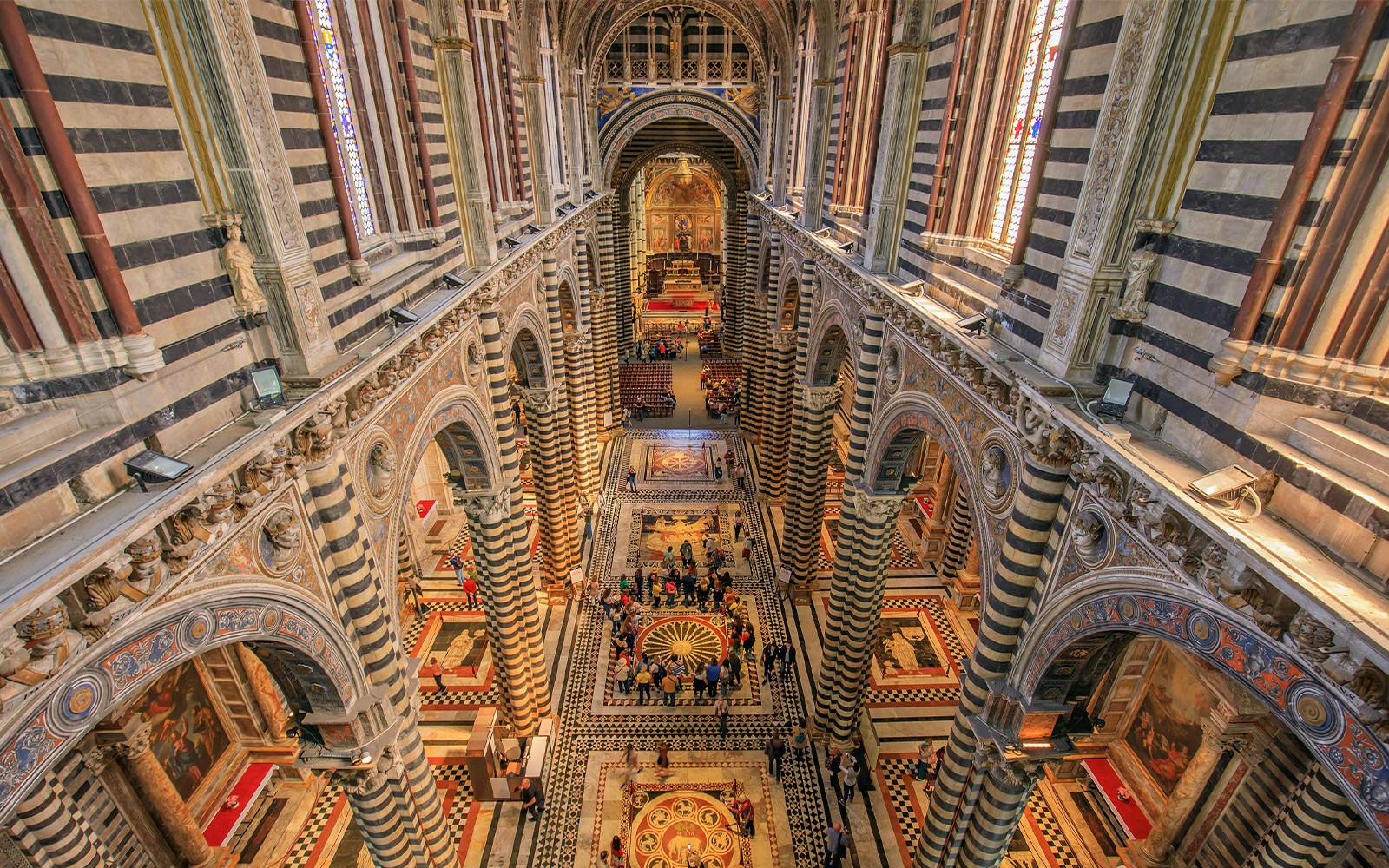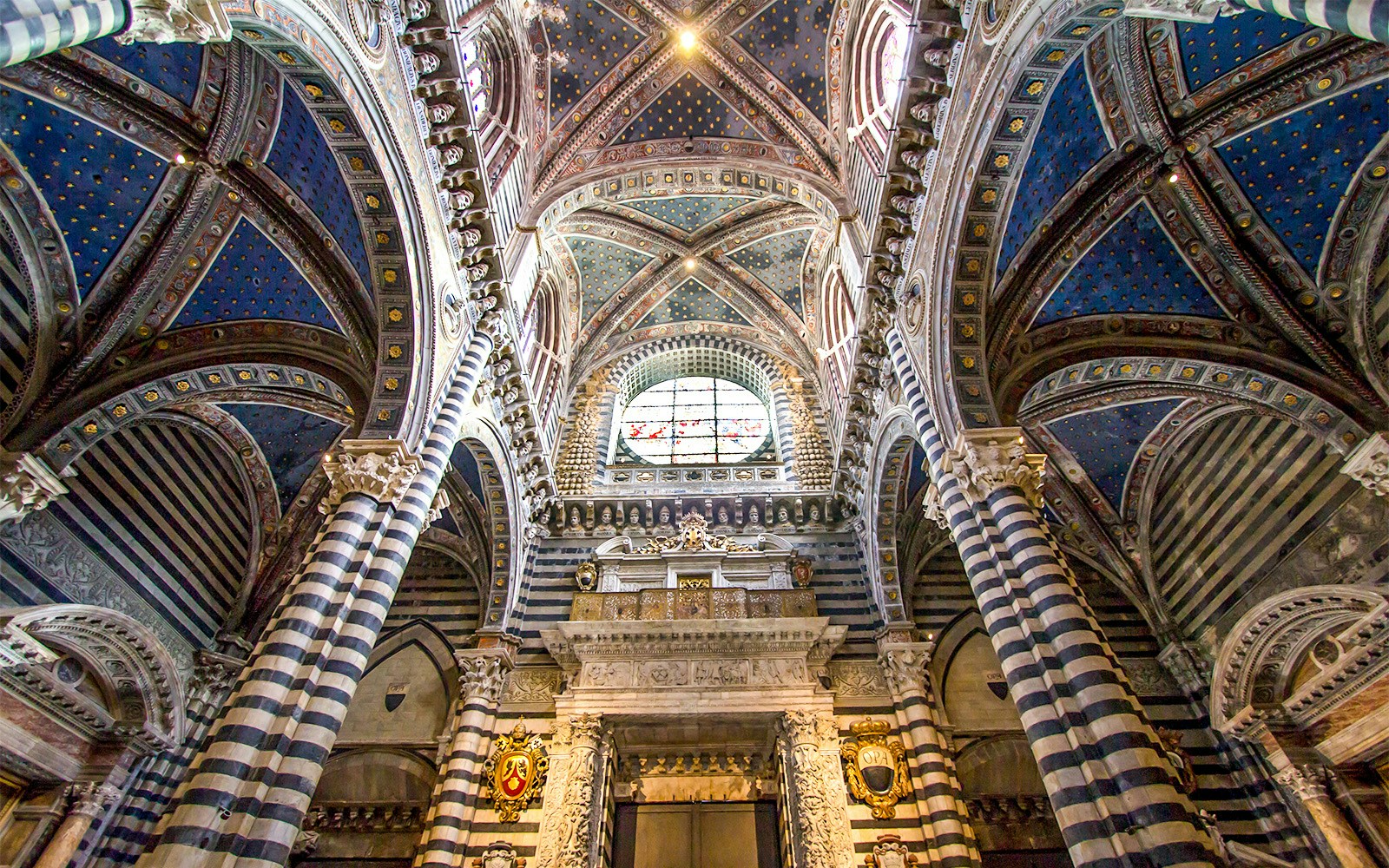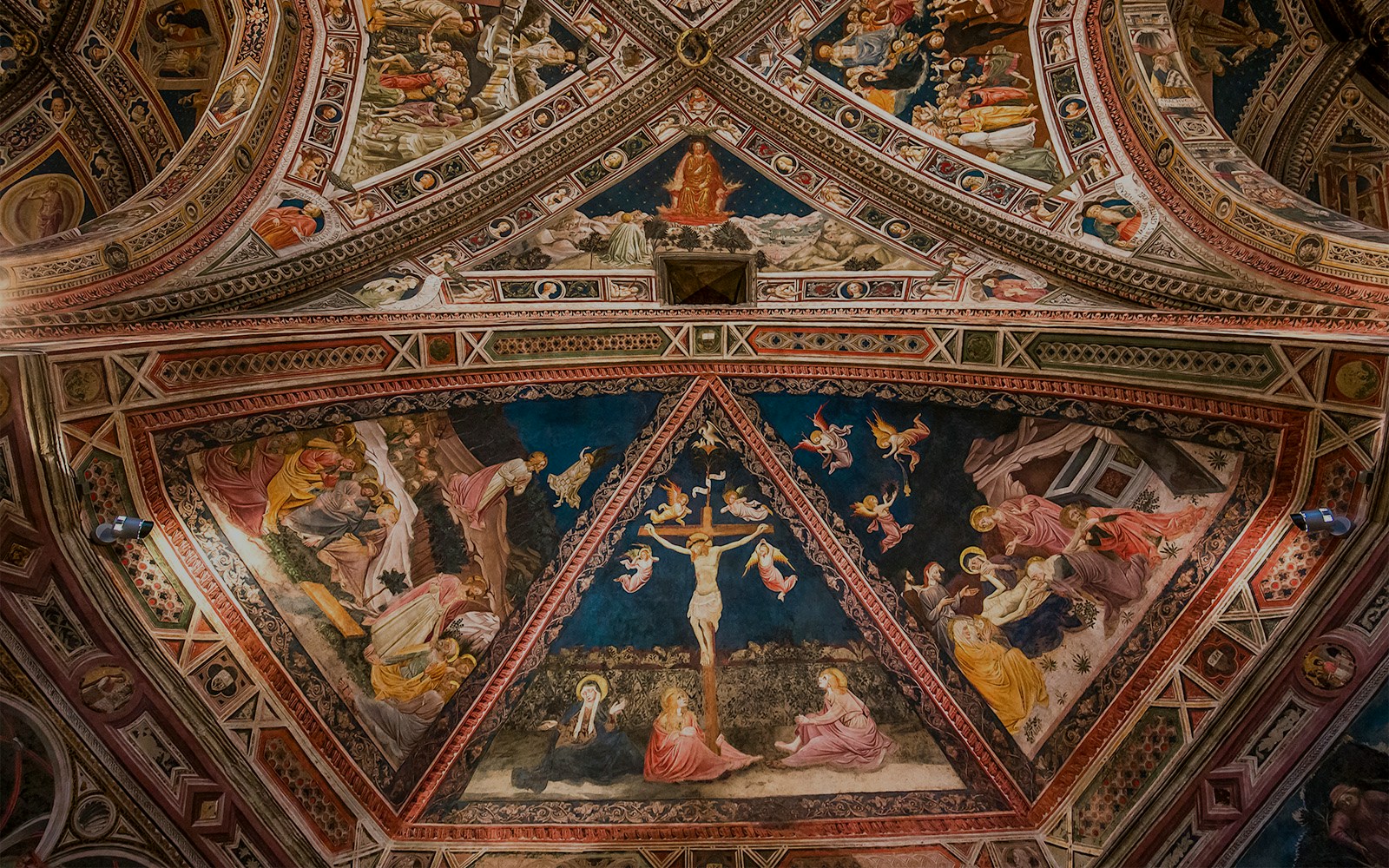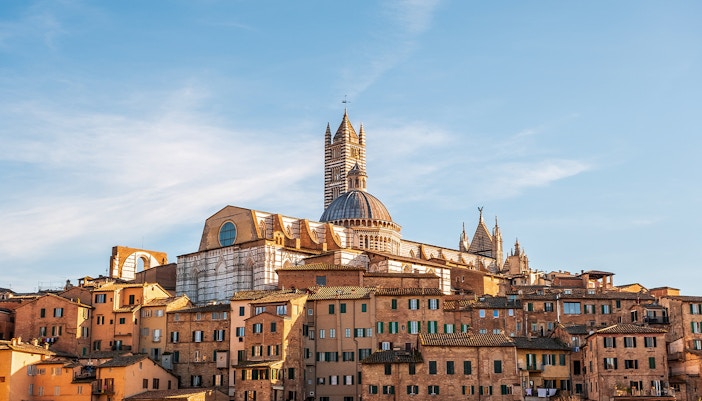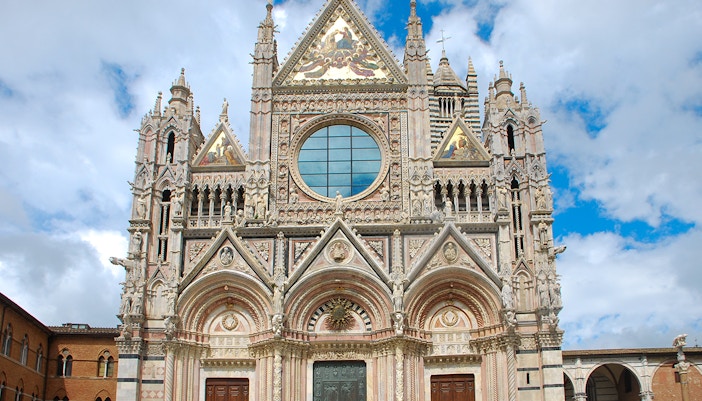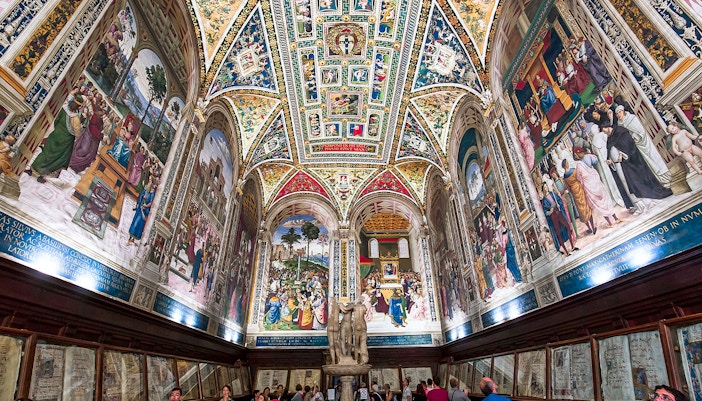The layout of the interior takes the shape of a Latin cross. The nave of the Cathedral, which starts from the entrance, is peculiarly long and follows a black-and-white color code. It is trisected into three aisles by a colonnade of hefty stone pillars that are striped in the same colors. One can find statues of allegorical figures and animals on the capitals of these pillars. Where the pillars reach the arches above, a horizontal molding of 172 busts of popes from the 15th and 16th centuries begins tracing the upper ledge of the nave all the way to the presbytery. Below these busts are cornices with the faces of 36 Roman and Byzantine emperors that run parallelly.

